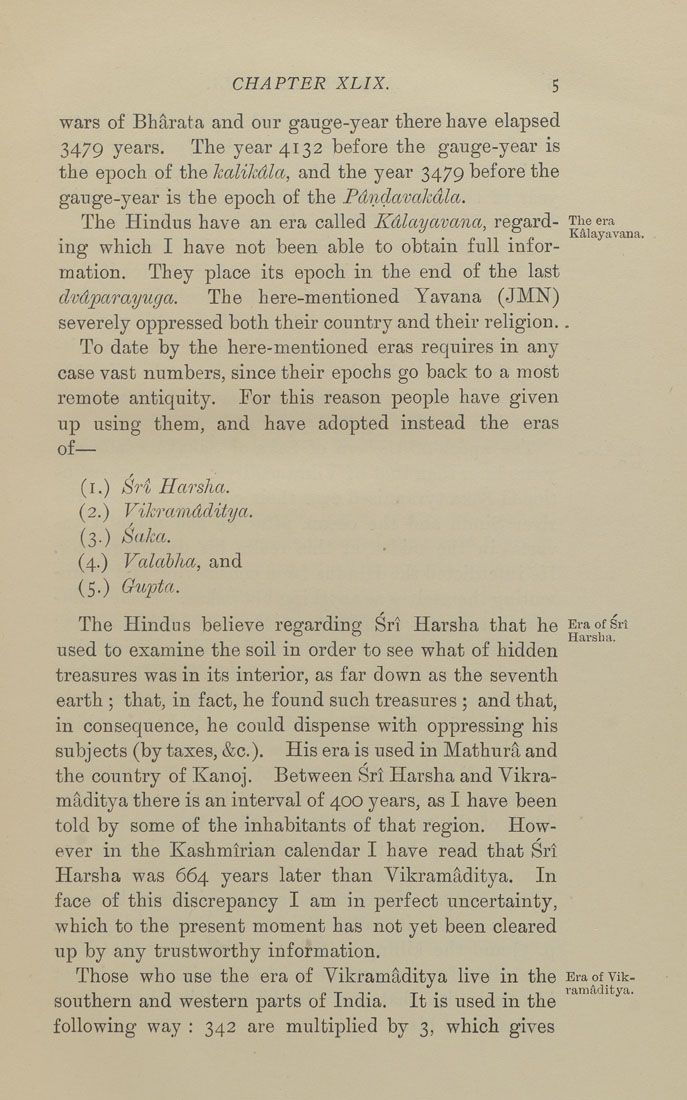Bīrūnī, Muḥammad ibn Aḥmad, Alberuni's India (v. 2)
(London : Kegan Paul, Trench, Trübner & Co., 1910.)
|
||
|
|
|
|
| Page 5 |

CHAPTER XLIX. 5 wars of Bharata and our gauge-year there have elapsed 3479 years. The year 4132 before the gauge-year is the epoch of the kalikdla, and the year 3479 before the gauge-year is the epoch of the Pdndavakdla. The Hindus have an era called Kdlayavana, regard- The era - . f n • (> Kalayavana. ing which I have not been able to obtain full infor¬ mation. They place its epoch in the end of the last dvdparayuga. The here-mentioned Yavana (JMN) severely oppressed both their country and their religion.. To date by the here-mentioned eras requires in any case vast numbers, since their epochs go back to a most remote antiquity. For this reason people have given up using them, and have adopted instead the eras of— (i.) Sri Harsha. (2.) Vikramdditya. (3.) Saka. (4.) Valahha, and (5.) Gupta. The Hindus believe regarding Sri Harsha that he EraofSrt Harsha used to examine the soil in order to see what of hidden treasures was in its interior, as far down as the seventh earth ; that, in fact, he found such treasures ; and that, in consequence, he could dispense with oppressing his subjects (by taxes, &c.). His era is used in Mathura and the country of Kanoj. Between Sri Harsha and Vikra- maditya there is an interval of 400 years, as I have been told by some of the inhabitants of that region. How¬ ever in the Kashmirian calendar I have read that Sri Harsha was 664 years later than Vikramaditya. In face of this discrepancy I am in perfect uncertainty, which to the present moment has not yet been cleared up by any trustworthy information. Those who use the era of Vikramaditya live in the Eraofvik- southern and western parts of India. It is used in the following way : 342 are multiplied by 3, which gives |
| Page 5 |







